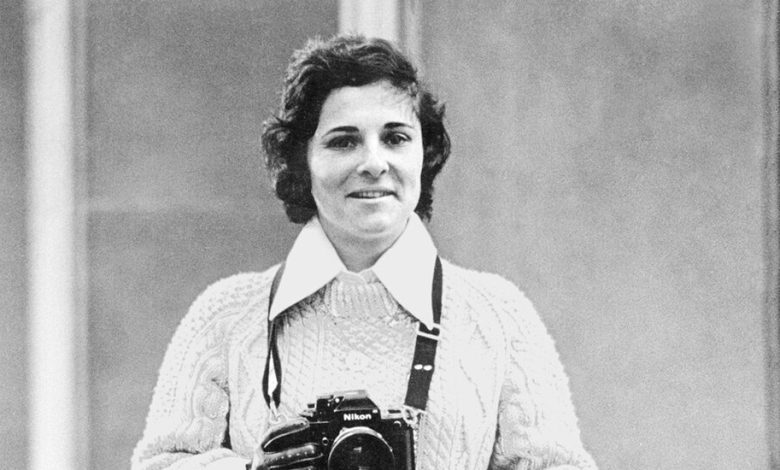Joyce Dopkeen, Barrier-Breaking News Photographer, Dies at 80

Joyce Dopkeen, who in 1973 became the first woman to be hired by The New York Times as a full-time staff photographer, beginning a 35-year career with the newspaper, died on Tuesday in Rockville, Md. She was 80.
Her death, in a hospital, was caused by heart failure, her brother, Jonathan Dopkeen, said.
Ms. Dopkeen roamed widely with her camera for The Times, whether capturing Muhammad Ali squaring off against Joe Frazier, female prison inmates training puppies to be service dogs, exuberant children enjoying summers in urban parks, or the aerialist Philippe Petit pausing during an eight-and-a-half minute tiptoe across the Great Falls gorge in Paterson, N.J., before 30,000 gaping spectators.
“The pix were always a still version of the story itself,” Nancy Lee, a former picture editor at The Times, wrote of Ms. Dopkeen in an email. “She knew how to capture the perfect moment.”
After Ms. Dopkeen started working full time for The Times in 1973, the newspaper recruited other women to join its ranks of photojournalists, among them Teresa Zabala, Marilynn K. Yee and Ruby Washington.
Reflecting on that era in an essay in The Times in 2019, Carolyn Lee, the first woman to run The Times’s photo department, in 1984, and later the first woman to be listed on the paper’s masthead of top editors, wrote: “As revolutions go, this one got off to a quiet and unassuming start in the early 1970s. It was achieved slowly, one female photographer at a time.”
“Over time,” Ms. Lee added, “as more women were hired and gained acceptance, they began to push successfully for publication of images that were different, for the truths they saw in people and events, for assignments that had once been denied them and for assignments that had not been envisioned before.”
Ms. Dopkeen devoted her entire career to photojournalism after receiving a Polaroid camera as a gift from her parents when she was a teenager.
“She was instantly intrigued by the notion of capturing people, emotions and subsequently events and history,” her brother said in an email.
Joyce Harriet Dopkeen was born on Oct. 23, 1942, in Worcester, Mass. Her father, Saul Kahn Dopkeen, was a pediatrician. Her mother, Lillian (Cobin) Dopkeen, was an artist.
After graduating from the Howard School for Girls in Massachusetts, she earned a Bachelor of Science degree in photojournalism from Boston University’s School of Public Communications in 1964.
Unlike many women who had majored in journalism at the time and struggled to find full-time employment, Ms. Dopkeen landed a job immediately after graduating, with The Montgomery County Sentinel in Rockville, Md. She joined The Boston Globe as a photographer in 1967, winning first place in United Press International of Massachusetts photography competition in two categories, personality and feature. She left The Globe in 1970.
Miss Dopkeen earned a Front Page Award from the Newswomen’s Club of New York in 1974 for her photograph of Mayor John V. Lindsay of New York dousing his aides with champagne as he prepared to leave office.
She left The Times in 2008 and lived in Ossining, N.Y., until several years ago, when she moved to the Washington area to be closer to her family.
In addition to her brother, she is survived by her sister, Leslie Dopkeen.
Regardless of whether a picture is worth a thousand words, Ms. Dopkeen understood that an article could be updated, rewritten and edited, but that an image was frozen in time.
“It’s one thing if a reporter misses a quote,” she said in 2019. “They can get a quote from somebody, but if a photographer misses it, that’s all she wrote.”
